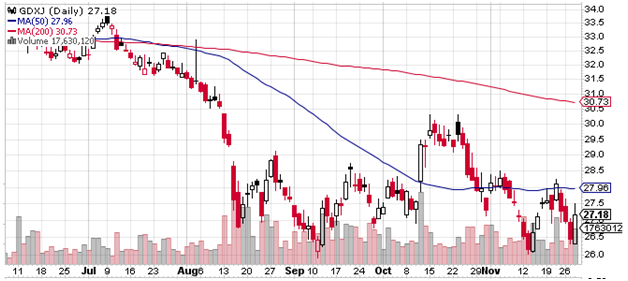In a previous post entitled Credit Risk Management Using Merton Model we provided a brief theoretical description of the Merton structural credit risk model. Note that,
The Merton model is an analysis model – named after economist Robert C. Merton – used to assess the credit risk of a company's debt. Analysts and investors utilize the Merton model to understand how capable a company is at meeting financial obligations, servicing its debt, and weighing the general possibility that it will go into credit default…Loan officers and stocks analysts utilize the Merton model to analyze a corporation's risk of credit default. This model allows for easier valuation of the company and also helps analysts determine if the company will be able to retain solvency by analyzing maturity dates and debt totals. Read more
In this installment, we are going to present a case study based upon the Merton credit risk model.
[caption id="attachment_588" align="aligncenter" width="628"] Junior Gold Miners ETF as at Nov 28 2018. Source: stockcharts.com[/caption]
Junior Gold Miners ETF as at Nov 28 2018. Source: stockcharts.com[/caption]
Our Client is a junior gold miner. They are looking to raise additional capital in order to finance the production of gold. The client currently has an outstanding liability in the form of future discount for the payment of deliverable gold. According to a contingency clause, the Buyer can exercise a certain amount of cash into a secured obligation. This conversion will increase the leverage of the Company, thus leading to higher credit risks.
We determined the increase in the credit risks by using the Merton structural credit model. We estimated that if the Buyer exercises the cash conversion clause, the credit spread of the Client will increase by approximately 20%. We thus helped the Client better negotiate the deal with their counterparty.
Article Source Here: Merton Credit Risk Model, a Case Study
